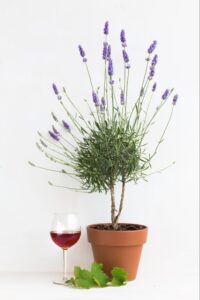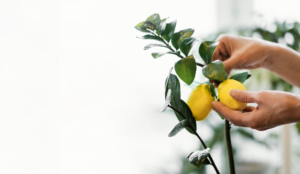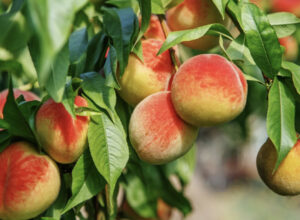Flourishing Flora: Dogwood Tree Care Tips

In the verdant expanses of Virginia, the Flowering Dogwood, heralded as the state tree, not only graces the environment with its aesthetically pleasing blossoms but also robustly thrives across diverse regional conditions. Esteemed for its delicate, typically white blooms, the dogwood emanates a gentle beauty and serves as an emblem of the state’s natural splendor.
Establishing a Thriving Dogwood: Initial Steps and Seeding Process
When observers ponder upon the endeavor to cultivate dogwoods, the task may initially spring from its seeds. Although obtaining dogwood through seeds often yields a burst of white blossoms, even when the seeds may proclaim to produce pink ones, the process engenders a gratifying cultivation journey. Utilizing seeds from an established dogwood, one can propagate a multitude of these enchanting trees, gradually adorning the landscape with their serene beauty.
Selecting a Vigorous Specimen: Acquiring and Identifying Healthy Dogwoods
In instances where seeding is not the optimal or feasible choice, acquiring a grafted dogwood demands meticulous selection. Optimal specimens boast straight, unblemished trunks devoid of any brown or yellow spotting, and are adorned with vibrant, healthy foliage, exemplifying the tree’s inherent vitality.
Ensuring Growth: Soil, Planting, and Environmental Conditions
The essence of thriving dogwood development pivots on utilizing slightly acidic, well-drained humus soil, with a recommendatory option to employ a pH testing kit, available in nurseries or online platforms, to ensure optimal soil conditions. The act of planting mandates that the dogwood’s root ball be nestled approximately 2/3 under the soil, with a mild looseness surrounding it to facilitate effective drainage and root proliferation.
Vital Maintenance Practices: Mulching, Watering, and Pruning Strategies
Mulch stands as a potent ally against weeds, dogwood’s notorious adversary, providing additional nutrients and aiding in water retention during drier periods. While initial stages post-planting require diligent watering to prevent dehydration, as the tree matures, it generally finds sustenance in natural rainfall. Pruning, although often conducted for aesthetic refinement, necessitates a cautious approach to prevent any inadvertent harm to the tree.
Ensuring Structural Integrity: Staking and Cautious Fertilization
For juvenile trees potentially vulnerable to robust winds and other harsh elements, staking emerges as a strategy to confer additional strength, safeguarding them during their delicate developmental phase. Fertilization, while occasionally employed sparingly in suboptimal soil conditions, is generally discouraged to allow for the dogwood’s natural growth trajectory.
Defensive Strategies: Fending off Pests and Protecting Bark Integrity
To ward off pests, maintaining the integrity of the dogwood’s bark by keeping it immaculate and free from scratches or nicks proves imperative. This preemptive care sustains its health and prolongs its vibrant presence within the garden or landscape.
For those embarking on a journey of dogwood cultivation in Virginia and seeking expertise, Richard’s Tree Service, since its establishment in 1996, has been a beacon of knowledge and experience, assisting homeowners in nurturing dogwoods, among other species, throughout the locality. Ensuring optimal results, their proficient team stands ready to facilitate individuals in navigating the intricate pathway of dogwood care and cultivation.
Renowned for its radiant blossoms and sturdy growth across the diverse biomes of Virginia, the Flowering Dogwood (Cornus florida) stands proudly as the designated state tree. Representing more than mere flora, this tree intertwines its roots with the cultural and natural tapestry of the region, providing aesthetic charm and ecological benefits alike.
Methodologies in Dogwood Cultivation: From Seed to Tree
1. Commencement via Seeding
Embarking on the cultivation journey of dogwoods often commences with seeding, a process rich with potential yet equally nuanced. A majority of dogwoods, when propagated from seeds, unfold into a spectacle of white blossoms, even amidst promises of pink hues from marketed seeds. The utilization of seeds from an existing dogwood does not merely sprout additional trees but also propels a perpetuating cycle of botanical legacy across generations.
2. Alternative Paths: Choosing a Grafted Specimen
In scenarios where seeding might not be viable or expedient, opting for a grafted dogwood becomes pertinent. The quest for the exemplary specimen unfolds, where indicators of vitality, such as undamaged, straight trunks and a vibrant, spot-free foliage, become paramount in selection criteria. Here, ensuring genetic robustness and future growth potential aligns closely with the meticulous inspection and choice of the initial specimen.
3. Nurturing through Appropriate Soil
The cradle of dogwood development lies significantly in its foundation – the soil. Optimal growth is often observed in slightly acidic, well-drained humus soil, establishing a nutritive and supportive base for the tree. Utilization of pH testing kits, accessible through both physical nurseries and online platforms, facilitates precise measurement and adjustment of soil acidity, ensuring a conducive environment for the dogwood to thrive.
4. Cultivation Techniques: Planting and Root Development
Planting dogwoods entails a nuanced understanding of its root system. Encompassing the root ball approximately 2/3 under the soil and maintaining a moderately loose soil composition not only enhances drainage but also fosters prolific root expansion, anchoring the tree firmly as it grows.
5. The Essentiality of Mulching
Mulch emerges as a formidable ally in mitigating the onslaught of weeds, providing a protective layer that also imparts nutrients and retains crucial moisture, especially during periods of scarce rainfall. This defensive and nurturing layer underpins the dogwood’s sustenance, safeguarding it from competitive flora and fluctuating environmental conditions.
6. Hydration Strategies: Regular and Adaptive Watering
Especially in their nascent stages, dogwoods necessitate consistent watering to circumvent dehydration. This regular hydration strategy gradually adapts as the tree matures, eventually leaning on the natural precipitation patterns to quench its thirst.
7. Pruning with Precision
While pruning predominantly addresses the aesthetic disposition of the dogwood, maintaining a disciplined approach ensures the tree is not inadvertently harmed during these grooming sessions. Here, striking a balance between maintaining its natural form and enabling healthy growth becomes pivotal.




